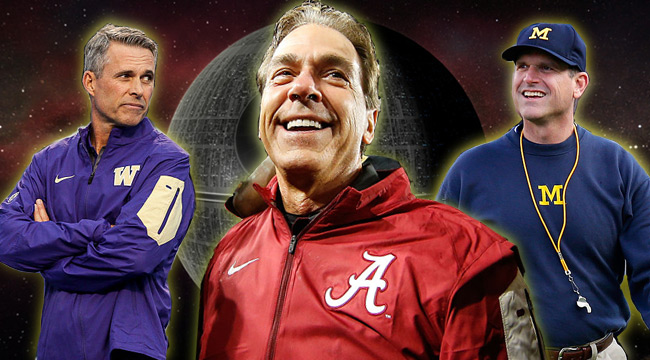
College football is back! The 2016 season kicked off in earnest Thursday night as part of a blockbuster, five-day opening weekend. If you’re just catching up, consider this your last-minute cram session for the most important themes, teams, and players in the upcoming campaign.
ALABAMA’S GOING TO WIN IT ALL AGAIN, AREN’T THEY?
Probably, yeah. At least if you believe the consensus: Bama’s the default favorite to repeat in the polls, in the magazines, and of course in Vegas, where it’s been tabbed as the favorite in 95 of its last 96 games dating back to 2009. A decade into his tenure, the Nick Saban Death Star is so entrenched at the top of the sport that the usual cycle of attrition and rebuilding that dictate expectations for every other program don’t even apply — the roster is so loaded with next-level talent that the departure of the starting quarterback, the Heisman Trophy winner, and most of the starting defense from last year’s championship run barely registered. Anywhere else that would’ve marked a historic exodus. For Bama, it’s business as usual.
All that said, though, despite their remarkable longevity among the national elite, the Crimson Tide are not and have never been invulnerable: We’re six full years removed from Saban’s only undefeated season as a head coach, a span that’s included four losses while ranked No. 1, a pair of postseason lapses in 2013-14, and back-to-back upsets at the hands of Ole Miss. And unlike his previous trips to the podium, last year’s crowning triumph over Clemson felt less like an inevitable coronation than an artful escape; although the Tigers lost even more to the draft, everyone who watched that game understands that a healthy Deshaun Watson would be every bit the equal of the vaunted Bama defense in a rematch.
Closer to home, LSU could be peaking at the right time to topple the Tide from the top of the SEC West. Tennessee’s resurrection seems more or less complete in the East. Or maybe after years of defying gravity, it’s simply time for the Death Star to begin its descent to Earth. What goes up must eventually come down. But there’s no particular reason to bet on eventually arriving anytime soon.
LSU? REALLY?
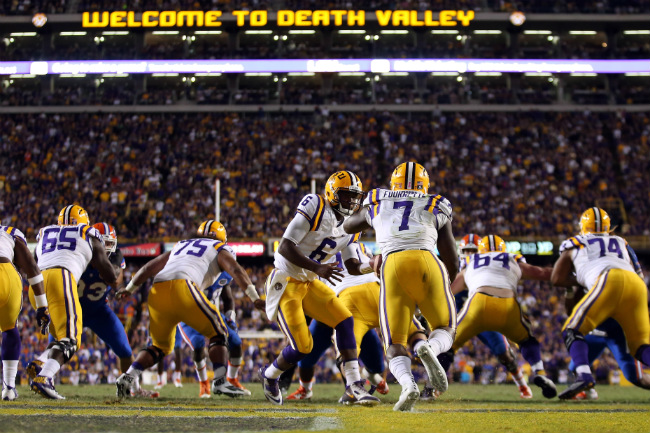
True, the Tigers are nearly five years removed from their last top-10 finish, in 2011, or their last win over Saban, which feels like a long time for a program that judges itself against the standard set by its former coach. But when current coach Les Miles was spared from the career guillotine last winter, at least part of the reason was that the 2016 team – as athletic as ever, anchored by Leonard Fournette in his prime and a veteran, senior-heavy defense — was simply too good to put through the turbulence of a coaching change. LSU gets Alabama in Baton Rouge and will export a massive draft class in 2017. If not now, when?
Because there are so few question marks elsewhere, your willingness to buy LSU as a serious playoff threat will come down to your faith (or lack thereof) in junior quarterback Brandon Harris, whose inconsistency in 2015 embodied the maddening QB play throughout Miles’ tenure. Harris has talent to burn and, after last year, as much on-field experience as any returning SEC starter except Tennessee’s Josh Dobbs. Most of the time, he can get away with handing off to Fournette and Derrius Guice and not screwing up. But will the big plays and clutch drives be there when the Tigers really need them?
HAS MICHIGAN ARRIVED AT PEAK HARBAUGH?
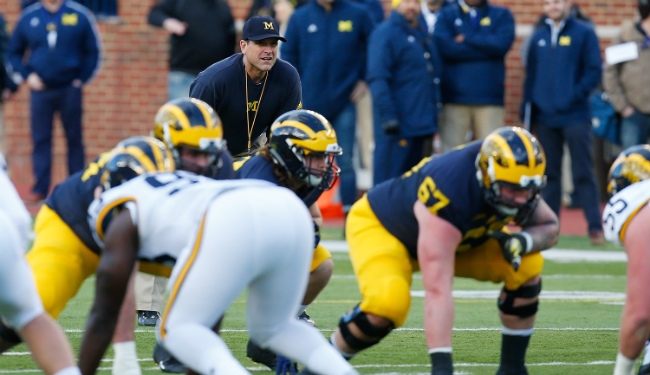
One of the most compelling trends of the BCS/Playoff era is that coaches who win big do it fast, establishing their programs as ascendant powers within two or three years of their arrival, and with the possible exception of Urban Meyer at Ohio State, nowhere has that trajectory been more obvious or inevitable than in Jim Harbaugh’s imperial return to his alma mater.
In Year 1 A.J. (After Jim), the Wolverines doubled their 2014 win total, improving from five wins in their final season under Brady Hoke to 10 in a single bound. In Year 2, with Michigan State and Ohio State in various stages of rebuilding, they’re already poised to bring their extended losing streaks against their rivals to an end and ride roughshod over the rest of the Big Ten.
If there’s a caveat in that assumption, again, it’s the new quarterback, whose identity remains unknown. Otherwise, even assuming only marginal improvement from the more familiar faces, Michigan has the look of a fully formed contender before a single member of Harbaugh’s first full recruiting class has even set foot on the field. If only the schedule gave them a chance to prove it against another Top-25 team before late October when they visit Michigan State — in the meantime, in lieu of compelling games, the most interesting storyline in the Big Ten may be tracking the progress of Ohio State’s fledgling lineup between opening day and the season-defining Michigan-OSU tilt in Columbus to close the year.
I’M BETTING MY DAUGHTER’S COLLEGE FUND ON WASHINGTON. I’LL BE FINE, RIGHT?
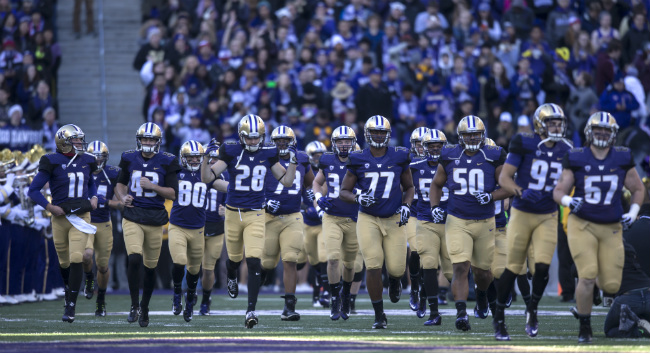
I’d suggest pumping the brakes on Washington, except the U-Dub bandwagon has picked up so much speed as the season approaches, there don’t appear to be any brakes. Admittedly, there’s a lot about the Huskies to like: Chris Petersen is a first-rate coach who’s assembled the best top-to-bottom lineup in Seattle since the turn of the century, and the absence of an obvious, playoff-caliber frontrunner in the Pac-12 leaves the door wide open for an upstart. The defense is going to be pretty nasty. And anyway, Washington should be good — this was the West Coast’s dominant program for most of the ‘80s and ‘90s. So 15 years in the wilderness feels like long enough.
But I’m not sure this lineup is ready just yet to justify the runaway optimism that’s built up around it. The headliners on offense, quarterback Jake Browning and tailback Myles Gaskin, are just sophomores, and altogether there are only five senior starters on both sides of the ball. That’s about where Tennessee was at this time last year: Good enough to compete in big games, slip into the bottom of the Top 25, and set up lofty expectations for next year, when the vast majority of the team will be back. Anything beyond that should be gravy, but with the hype being what it is, anything less may feel like a disappointment.
HAS BAYLOR BEEN REDUCED TO A SMOKING CRATER?
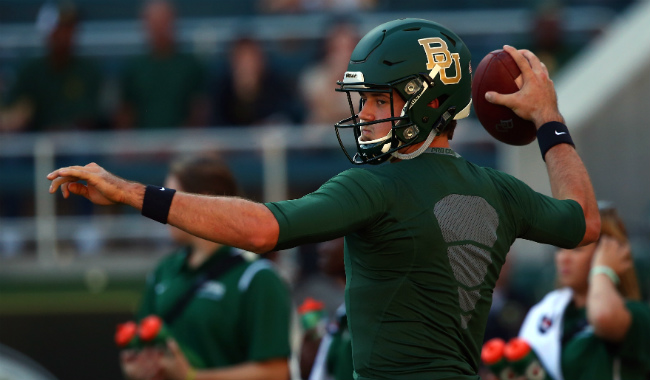
Not yet: Although the most successful head coach in school history was run out of town in May amid a flurry of noxious headlines, the foundation of the Art Briles era was preserved (temporarily) by the decision to keep the rest of the coaching staff intact for 2016. So assuming quarterback Seth Russell is fully healed from the neck injury that cut short his junior campaign, and assuming interim/caretaker head coach Jim Grobe doesn’t concern himself too much with the Xs and Os, the Bears should enjoy at least one more season of looking like their usual, prolific selves. (It doesn’t hurt that the non-conference schedule was seemingly designed to bolster low morale.)
Beyond this season, though, the outlook is decidedly crater-y. The scandal that cost Briles his job didn’t (or hasn’t yet) resulted in NCAA sanctions, but it did decimate Baylor’s long-term depth: Whoever agrees to take on the job permanently this winter, he’ll inherit a roster that lost its quarterback of the future and fully half of its 2016 recruiting class to the transfer market. With no idea what the program will look like in six months, 2017 recruiting is going very badly. Regardless of what happens this year on the field — which, again, should be a pretty close approximation of the past several years — the shine on this program is clearly off for the foreseeable future.
WHO’S GETTING FIRED?
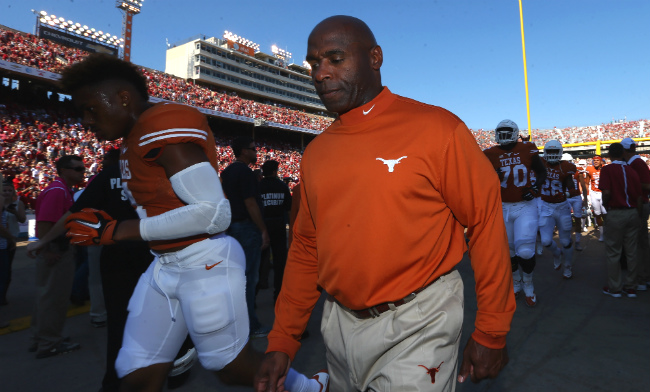
The SEC coaching ranks have been a little too stable over the past couple years for such a cutthroat league, meaning a significant bloodletting is probably on the horizon. At the top of that list: Texas A&M’s Kevin Sumlin, whose post-Manziel teams are developing a reputation for starting fast (5-0 each of the past two years) and falling hard against the cream of the conference, with plenty of melodrama along the way. Sumlin is paid too much, and has recruited too well, to settle for mediocre bowls and unranked finishes; barring a major upset over Bama or LSU to balance the scales, another five-loss season may be his last.
Elsewhere in the conference, Auburn’s Gus Malzahn has a bit more margin for error, if only because (unlike Sumlin) his resumé includes a relatively recent SEC championship, in 2013. But last year was a disaster for Auburn, which plummeted to last place in the West Division after opening in the Top 10, and on paper the 2016 team doesn’t look much better; as Gene Chizik learned the hard way, when you share a state with Nick Saban, last-place finishes tend to overwhelm whatever goodwill remained from earlier success. And in the East, Kentucky’s Mike Stoops may be facing a bowl game-or-bust scenario after failing to get the Wildcats into the black in any of his first three seasons there.
But the name that has dominated “hot seat” chatter throughout the offseason is Charlie Strong, who followed his deflating debut at Texas in 2014 with an even worse effort last year, a 5-7 slog so depressing even random upsets over Oklahoma and Baylor couldn’t salvage it. For the marquee program in the most fertile recruiting state in the country, the lack of recognizable star power on the Longhorns roster is shocking. This year, Strong’s fate could be in the hands of a true freshman quarterback, Shane Buechele, who isn’t guaranteed to start Sunday’s season opener against Notre Dame, but is the favorite to wrest the job from senior Tyrone Swoopes long-term. But three years in, there’s no more patience for growing pains: Unless Buechele’s an instant hit, it may be another coach who winds up reaping the benefits.
THE HEISMAN: WHO’S GOING TO WIN IT?
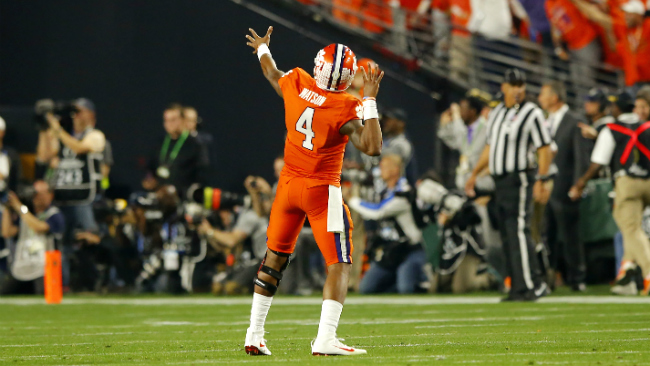
I’m almost tempted to ask who’s not going to win it: Six of last year’s top seven finishers in Heisman voting are back, any of whom could conceivably be promoted as the frontrunner, making up as large and accomplished a group of preseason contenders as I can recall. And that’s not even including Ohio State QB J.T. Barrett, who finished fifth in 2014 before being relegated to a part-time role last year, which remains an incredible sentence to write. This year he’ll be back as the Buckeyes’ full-time focal point.
Because the modern Heisman is still largely reserved for quarterbacks (only three non-QBs have won it since 2000), the tentative pole position belongs to Deshaun Watson, who finished third as a sophomore and elevated his stock even further with a couple of extra-brilliant performances in the playoff. Oklahoma’s Baker Mayfield (4th in 2015) is on the short list for the same reasons.
But the running back class is equally brilliant, featuring the sheer, visceral power of Leonard Fournette, the breakaway speed of Dalvin Cook, and the unrivaled statistical élan of Christian McCaffrey. If any one of those three manages to improve on his gonzo sophomore campaign – for Fournette, that means delivering against Alabama after last year’s dud in Tuscaloosa; for McCaffrey, it seems impossible — it’s hard to imagine how he could be denied. But if a two-way wildcard like, say, USC’s Adoree’ Jackson or Michigan’s Jabrill Peppers feel like making it interesting on the “all-purpose” front, well, I’m sure Times Square has plenty of room.






